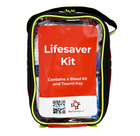The Nervous System
Want to watch this video? Sign up for the course
or enter your email below to watch one free video.
Unlock This Video Now for FREE
This video is normally available to paying customers.
You may unlock this video for FREE. Enter your email address for instant access AND to receive ongoing updates and special discounts related to this topic.
Overview of the Nervous System
This guide explains the structure and function of the nervous system, highlighting its key components and how nerve damage can occur.
Basic Elements of the Nervous System
- Sensation: Gathering information.
- Analysis: Input and processing of information.
- Response: Reacting and taking appropriate action based on the processed information.
Components of the Nervous System
- Central Nervous System: Comprising the brain and spinal cord.
- Peripheral Nervous System: Consisting of nerves extending beyond the spinal cord.
Potential Nerve Damage
Nerves can be damaged due to various reasons, including:
- Compression: Such as spinal nerve compression from herniated intervertebral discs, leading to conditions like sciatica.
- Physical Trauma: For instance, severe ankle breaks affecting nerve function in toes and feet.
Importance of Timely Treatment
Immediate medical attention is crucial in cases of nerve damage to prevent long-term implications and aid recovery.
Recommended Products For You
iPAD SPR Semi Automatic Defibrillator
£925.00 + VAT
Woundclot Trauma Dressing 10cm x 10cm
£11.95 + VAT
Animal First Aid Kit
£12.00 + VAT
Cyclist Trauma / Emergency Kit
£55.00 + VAT
WoundClot Trauma 8cm x 100cm
£39.95 + VAT
Lifesaver Kit with Tourniquet - Black
£99.00 + VAT
Lifesaver Kit with Tourniquet - Red
£99.00 + VAT
Lifesaver Kit with Tourni-Key - Red
£85.00 + VAT

_-Trauma_10x10_CE.jpg)


_-Trauma_8x100_CE.jpg)


